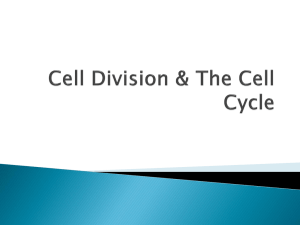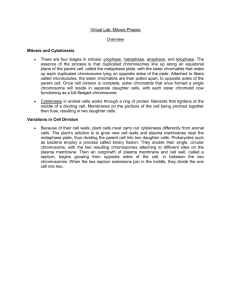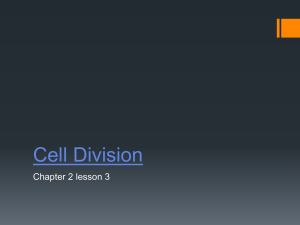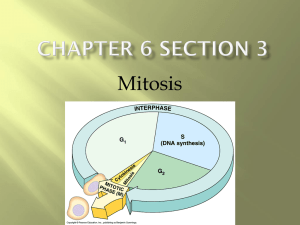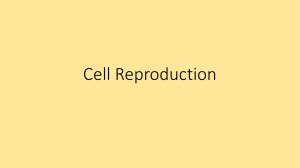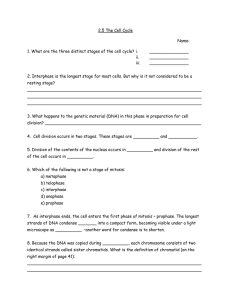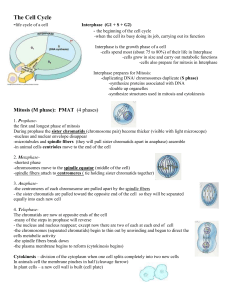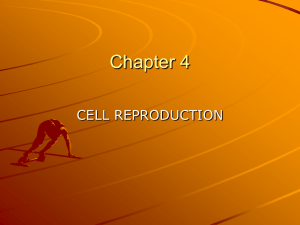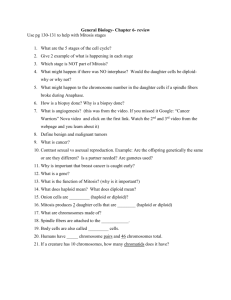Cell Division: Mitosis NTK
advertisement
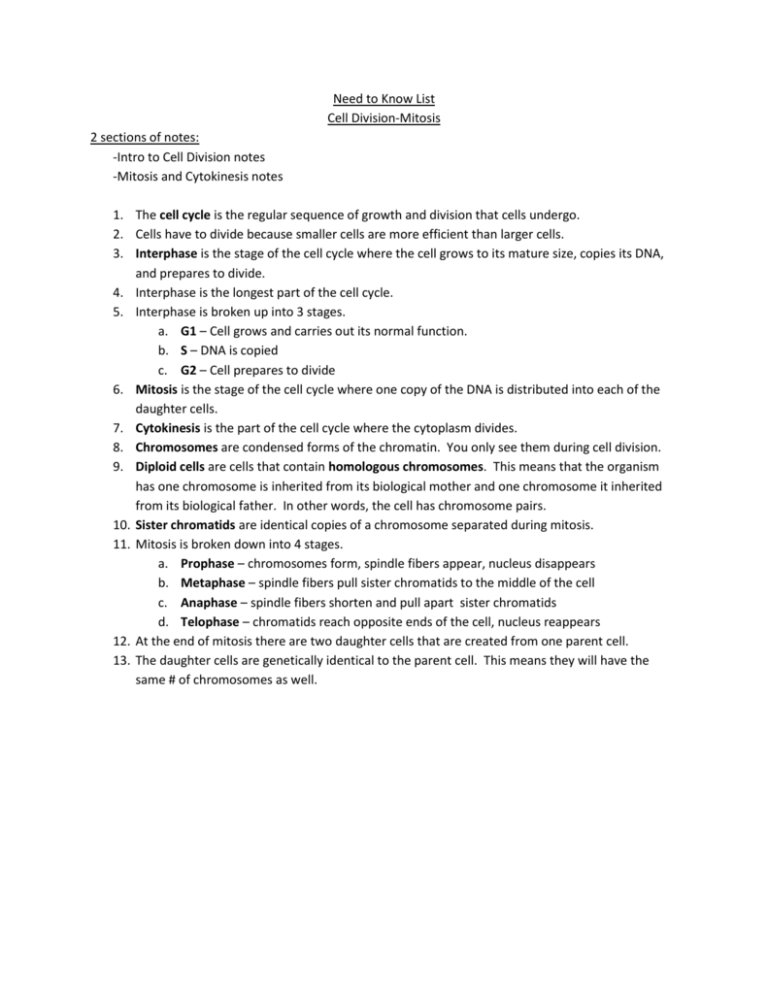
Need to Know List Cell Division-Mitosis 2 sections of notes: -Intro to Cell Division notes -Mitosis and Cytokinesis notes 1. The cell cycle is the regular sequence of growth and division that cells undergo. 2. Cells have to divide because smaller cells are more efficient than larger cells. 3. Interphase is the stage of the cell cycle where the cell grows to its mature size, copies its DNA, and prepares to divide. 4. Interphase is the longest part of the cell cycle. 5. Interphase is broken up into 3 stages. a. G1 – Cell grows and carries out its normal function. b. S – DNA is copied c. G2 – Cell prepares to divide 6. Mitosis is the stage of the cell cycle where one copy of the DNA is distributed into each of the daughter cells. 7. Cytokinesis is the part of the cell cycle where the cytoplasm divides. 8. Chromosomes are condensed forms of the chromatin. You only see them during cell division. 9. Diploid cells are cells that contain homologous chromosomes. This means that the organism has one chromosome is inherited from its biological mother and one chromosome it inherited from its biological father. In other words, the cell has chromosome pairs. 10. Sister chromatids are identical copies of a chromosome separated during mitosis. 11. Mitosis is broken down into 4 stages. a. Prophase – chromosomes form, spindle fibers appear, nucleus disappears b. Metaphase – spindle fibers pull sister chromatids to the middle of the cell c. Anaphase – spindle fibers shorten and pull apart sister chromatids d. Telophase – chromatids reach opposite ends of the cell, nucleus reappears 12. At the end of mitosis there are two daughter cells that are created from one parent cell. 13. The daughter cells are genetically identical to the parent cell. This means they will have the same # of chromosomes as well.

